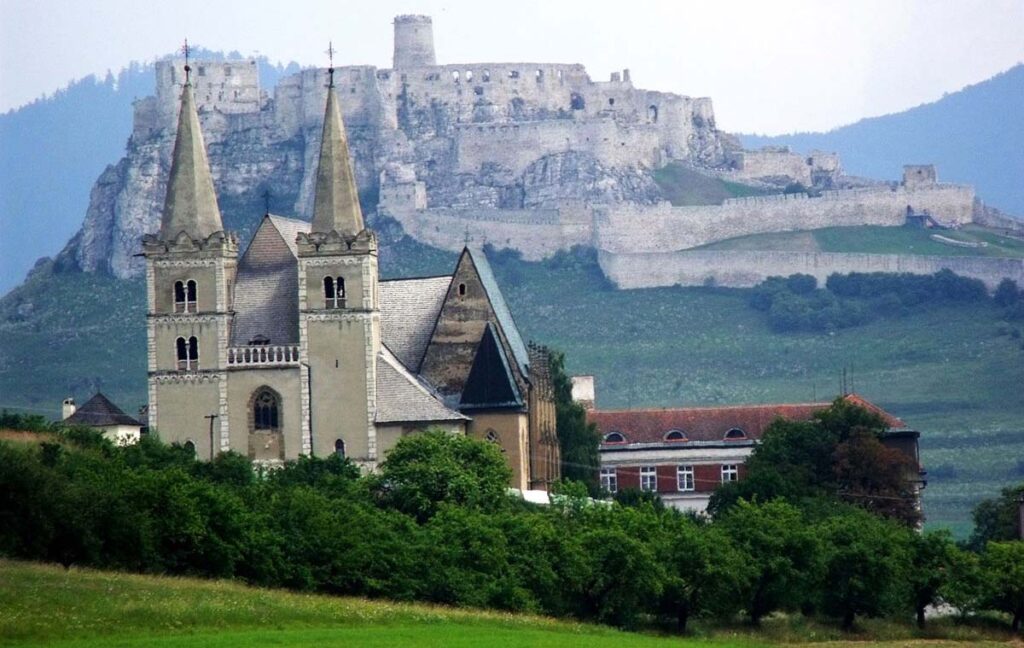A word about fortifications
Medieval fortifications were used as a military defensive tactic used in Europe after the fall of the Western Roman Empire and up until the Renaissance Period. It was a popular strategy that worked in many cases. As a proof, their almost intact structures can be admired to this day in almost any European Country. But their continuing existence is also proof of the care, expertise, and ingenuity of our ancestors when it came to defensive constructions.
The structure of these fortifications is somewhat similar in almost any part of central Europe. And any of you can discover this just by taking a look at a few examples, such as we have provided in this article.
There is a main defensive wall that surrounded the most important structures of the settlement. This is also why all of the remaining walls you see today surround the “Old Towns”, as they are known in Europe. These are the locations of the old settlements and what could be restored or rebuilt of them. And they have been turned into touristic points of interest where one can still observe important elements of the town’s historic past.
[adsenseyu2]
Inside the walls, you will always have the church or cathedral and the town hall, which were considered the focus points of a settlement back in the days. In rare cases, if the city would expand too much behind the wall, another fortification would be built around the expansion.
The fortified wall usually consisted of one main gate and in some cases additional ones if needed. They also had defensive towers, known in most cases as archer towers, since those were the weapons used at that time. But, of course, all of these became obsolete with the invention of the cannon fire and the explosive shell. These weapons were too powerful and in many cases managed to almost completely destroy the defensive walls. Luckily for us, some of the buildings managed to escape almost intact and we can admire them now in all of their glory.
But we can only gaze at the stone fortifications, which were used to defend settlements in Central and South Europe. In the northern part of Europe, you won’t see Fortified Cities still standing because their main resource for building defensive walls was wood. The material was highly available and accessible to them at the time and it did last for a good while until the weapons got more destructive and the wood structures could stand no more.
So, in this article, we are going to focus on Central Europe, where many, if not all, of the fortifications, were made out of different types of stone. We will travel through several countries such as Croatia, Estonia, Hungary or Montenegro and discover some of the most well kept beautiful small towns and restored fortifications.
#Dubrovnik, Croatia

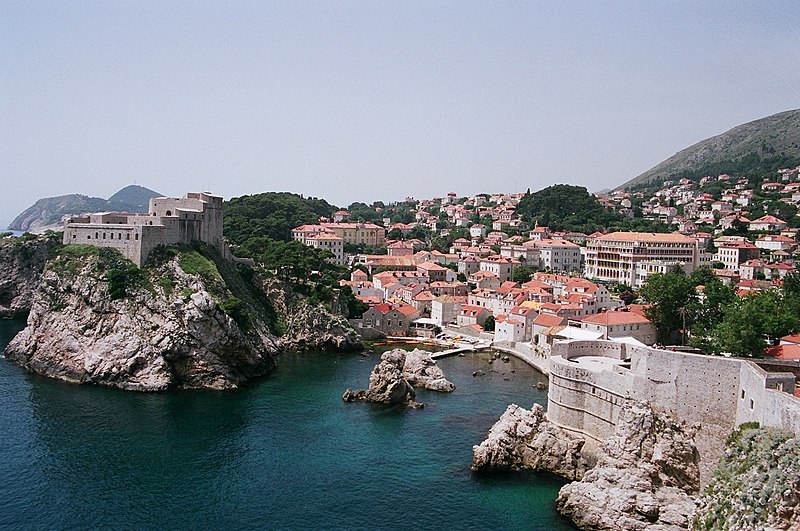
Dubrovnik is one of the most popular fortified cities of Central Europe. Its defensive walls are well known as “The Walls of Dubrovnik”, they even have an entire Wikipedia page about them for those of you interested, and they have been included in the UNESCO World Heritage Sites List. They are the pride of the town and one of the top reasons for which Dubrovnik has millions of tourists visiting every year. And a very good reason for which any of you should visit as well.
It is believed that in the place where today the famous Walls of Dubrovnik stand, originally there was a wood fortification, also known as “Palisades”. This imposing stone structure that we can see today around the city is supposed to have been built between the 12th and the 17th centuries, expanding and being modified along the way in order to fit the growing city. In the present day, after many years of additions and restorations to the original structure, the walls reach approximately 2000 meters in length and in some places a maximum height of 25 meters. As the city of Dubrovnik continued to expand long after the walls lost its main purpose, they remained as a limit and protection of the old town. Managing to keep within them an old city charm and an intriguing quality that is well worth exploring.


#Budva, Montenegro
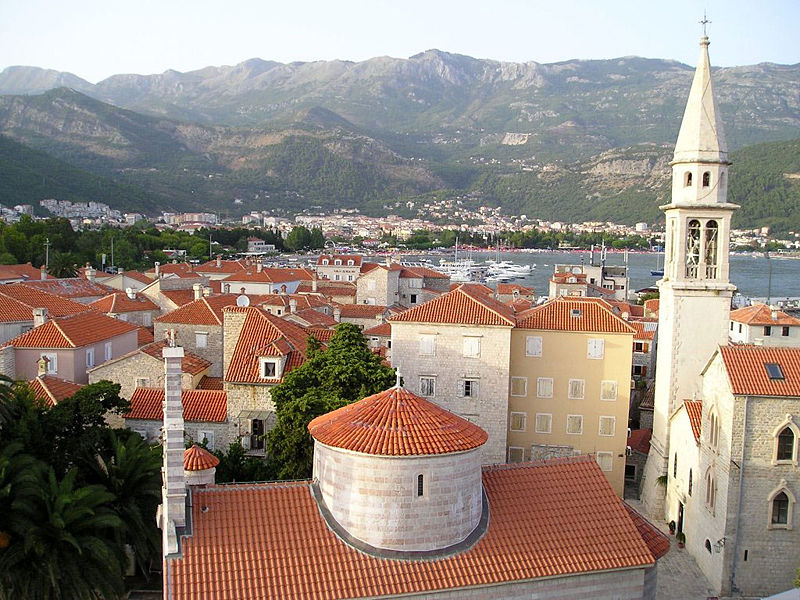
The city of Budva hides one of the most beautiful unexplored locations that you will find around Europe. Its attraction doesn’t come simply from its gorgeous position, at the edge of the Adriatic. But it also emerges from its wonderful history and well maintained historic remains. A mix of old and new, of relaxation and excitement, can be found here, making it not only perfect for our list but also perfect for you to visit.
As we’ve mentioned in the first paragraph, the remains of the old settlement are of course known as the Old Town of Budva and are located right at the edge of the rocky peninsula. Which is only natural, considering that any settlement starts at the edge of a water source. In this case, this location just happened to play to this city’s strength even to this day. The location of the city is a huge touristic advantage, especially during summer.


But getting back to our reason for checking out this town, its fortified town. It is known that the city walls were built only during the Venetian rule, even though the settlement was already in this location ever since the Roman Era. Besides the walls, one can notice all the other elements of a fortification to be in the right place, right inside the defensive walls. The citadel and old church can be seen and visited in their original location. The walls were of course filled with defensive towers all along them and the city gates were also present in a number that allowed people to enter from any side of the town. Over the years, the gates facing the sea were closed due to them not being needed or used anymore.
But, for those interested, today you can visit the remaining gates, which open up to narrow but beautiful streets filled with restaurants, cafes and diverse shops. Most of them will also lead you towards the large public square in the north of the citadel from where you can start the tour all over again on other similar but different and interesting streets. Summer is a particularly busy time for the city of Budva, so you make sure to make your arrangements asap if you plan on visiting it this season.

#Spišská Kapitula, Slovakia

You may have heard at some point in your life about one, or all, of the fortified cities mentioned above. But I bet you that just a handful of you, maybe even less, have heard about this particular town. I have to honestly say that, out of the entire list of cities in this article, this one is my favorite. It may be the fact that this is not such a popular destination as the rest of them. It may be because of its beautiful location and surroundings. But no matter my reasons for writing about it, I will just give you the facts and let you decide if you find it worth visiting.
First of all, of course, the main reason for which to visit Spišská Kapitula is its fortifications and gorgeous old city. The defensive walls surround a beautiful and single street “Old Town” which has been almost perfectly preserved as if it was built just a few years ago. Its Cathedral, which was visited by the Pope John Paul II in 1995, is just another beautiful reason to give this city a tour.
But another great reason and tip for tourists who will find themselves in the area is represented by the Spis Castle. A gorgeous structure located just a few minutes from this fortified town and which can be seen right from the main street, as seen in the picture above. The opposite view of this frame I am sure would be as, if not even more, spectacular. So if you’re looking for something simple and stunning location to visit, make sure to give this town a try.

#Torun, Poland
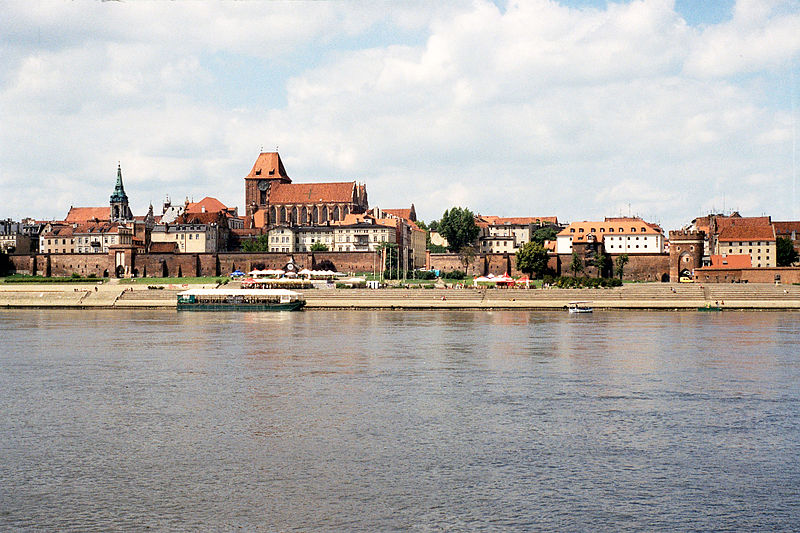
The city of Torun is yet another example of an extremely well preserved “Old Town” that has survived the ages and the evolution of modern-day constructions. Being listed on the UNESCO World Heritage Sites since 1997, this city is known to have some of the most well preserved Gothic Architecture buildings. Many of them made completely out of brick and left uncovered, make for a bold and impressive look that is stunning to this day. Among the many buildings constructed in this manner that are worth seeing, we have the Cathedral of SS John the Evangelist and John the Baptist, St Mary’s church, The Old Town Hall, and, of course, the city fortifications that are located all around the Old Town. And yes, even the fortifications are made out of brick and fit perfectly in the same pattern, making every part of the old town feel connected with each other.
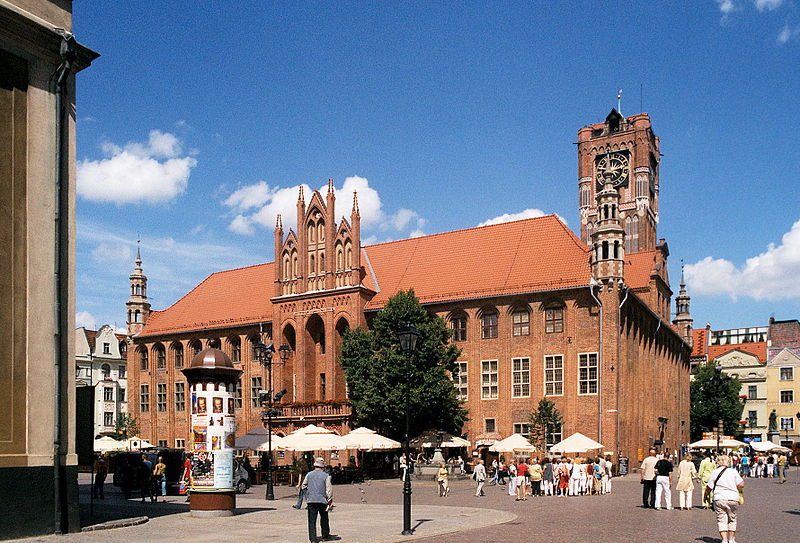
And all of these monuments and buildings can be visited by any of you because Torun was extremely lucky during the Second World War and managed to escape any major destruction that usually came upon other historic cities in Poland. So any intact building you get to see in this town has maintained its original structure, being only renovated, at the most, if it was required. And this was the plan for the entire historic area of the city. To restore only if necessary and keep it as close to its original state as possible in order to not lose any of that old town feeling.
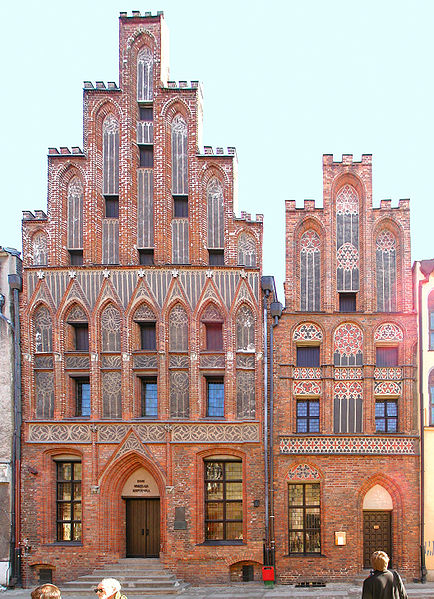

#Kufstein, Austria

Kufstein is the second largest town in the district of Tyrol, Austria. And it is on our list of Central European Fortified Cities because it is the host of the well known “Kufstein Fortress”. The first historical mentions of this fortress date back to the 13th Century, when it is known to have been under the possession of the Bavarian Duke Ludwig. Over the next years, it was fought over and its ownership was moved back and forth between dukes and kings of Bavaria and Tyrol. But this was not for nothing. To every owner that is stood under, the fortress gave many times the advantage of position and defense when confronting its enemies. In 1814 its ownership finally became stable as it returned to Austria, where it has been since.
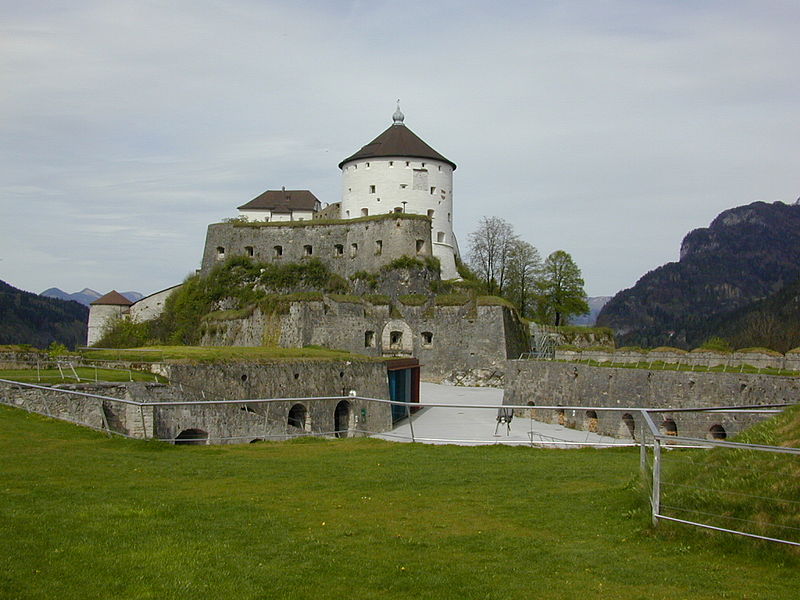

Even though most of the fortress’s structure was built during its original construction phase, the massive round tower, which is now iconic and can be noticed in many pictures that portrais the fortress was only added between 1518 and 1522 by Emperor Maximilian I. By having this tower added, the structure became much more powerful in its main defensive role. But that was not the only purpose served by this particular fortress. Over the years it was also used as a prison, especially during the Austro-Hungarian Empire’s rule, representing the confinement location for many political dissidents.
Today the fortress stands as strong as ever, hosting inside the “City Museum of Kufstein” and being one of the major visiting points of this city. It can be reached by a funicular railway, which offers a spectacular view of the city and its surroundings.
Banská Štiavnica, Slovakia
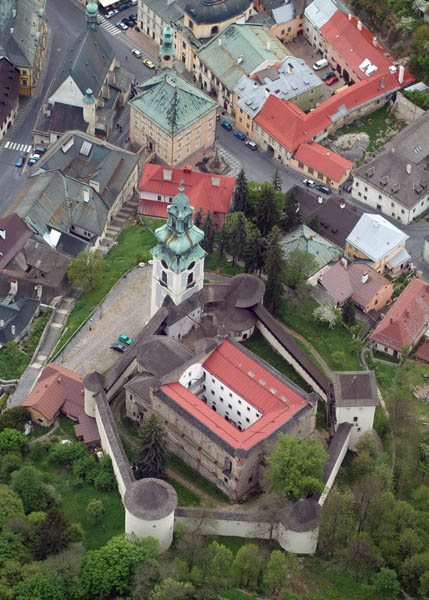
As history puts it, the city of Banska Stiavnica may be one of the oldest settlements that we get to speak of in this article. It is located in the middle of what is known as a “caldera”, a large cauldron-like depression that forms following the evacuation of a magma chamber/reservoir. And the first evidence of settlements in this region dates back to the Neolithic period.
From the first evidence of its existence, this town has been linked to mining of its abundant silver ore resources as the main occupation which continued throughout its history. During the High and Late Middle Ages, this town got to serve and the main producer of silver and gold in the entire Kingdom of Hungary. But this high status made the town a target for the Turks who, during the Ottoman Wars, tried to conquer all of Upper Hungary’s rich mining towns. And with this new threat upon it, the city of Banska Stiavnica started to build powerful fortifications in order to protect itself. These also included two large castles, all built during the 16th century.

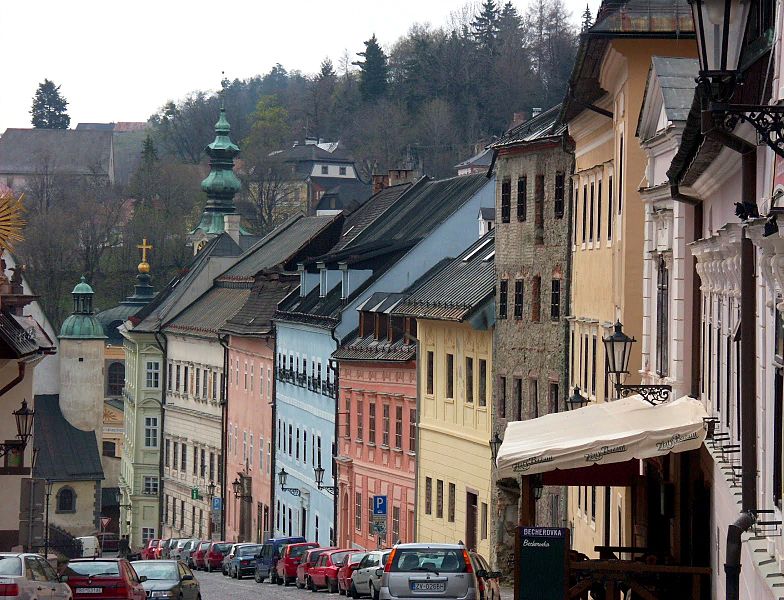
Later in the days, this town continued to prosper and improve its mining activities, getting to be one of the first locations in the entire world where gunpowder was used as a mining tool in 1627. During the 18th century, a sophisticated system of channels was built around the city in order to drain water from flooded mines. And this system not only prevented mines from being closed during floods but it also took another role. That of providing energy for the early industrialization.
This is also where the first mining school of the Kingdom of Hungary was founded in 1735. In 1763 it was transformed into the Academy of Mining. In 1807 a Forestry Institute was added to its curriculum, which led to its merging in 1848 into the Academy of Mining and Forestry, the first technical university in the world. But, in 1919 after the founding of Czechoslovakia, the academy was moved to Sopron in Hungary where it still stands today.
In 1782, the city reached its peak as the third biggest town in the Kingdom of Hungary, but it’s development, being so closely tied to mining, it has slowed down and been declining since the second half of the 19th century. Today, most of its fame comes from its powerful and influential history, being an important recreation and touristic center.
Znojmo, Czech Republic

The fortress, or at least an early version of it, is believed to have existed on this land somewhere around the 9th century, during the time of the Great Moravian Empire. It is known that the castle originally stood as a residence for members of the Přemyslid dynasty, being later fought for by both Bohemia and Moravia, ending as a part of Czechoslovakia after the First World War. Unfortunately, it also became part of the Reichsgau Niederdonau during the occupation of Nazi Germany, between 1938, and 1945.
When it comes to its sightseeing, just like in any other Fortified town, the main and most beautiful buildings are located in the city center. And they are the Gothic Church of St Nicholas, The Late Gothic Town Hall Tower and the Town Hall. The Znojmo Castle, overlooking the Dyje River is something you should also have on your visiting list while in this town. And another special part of this city is represented by its famous catacombs which are known to date back to the 14th and 15th century. They were built as elaborate tunnels that would go way beyond the city walls in order to allow escape for those in need.


